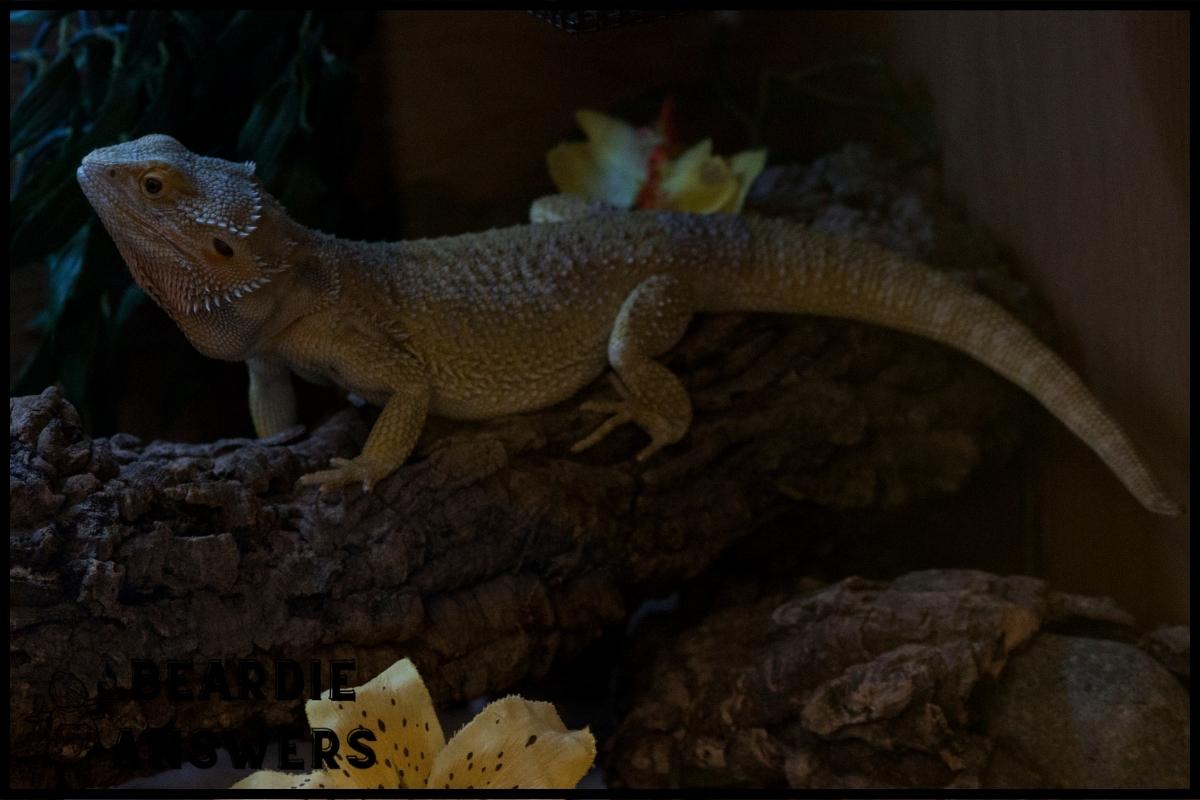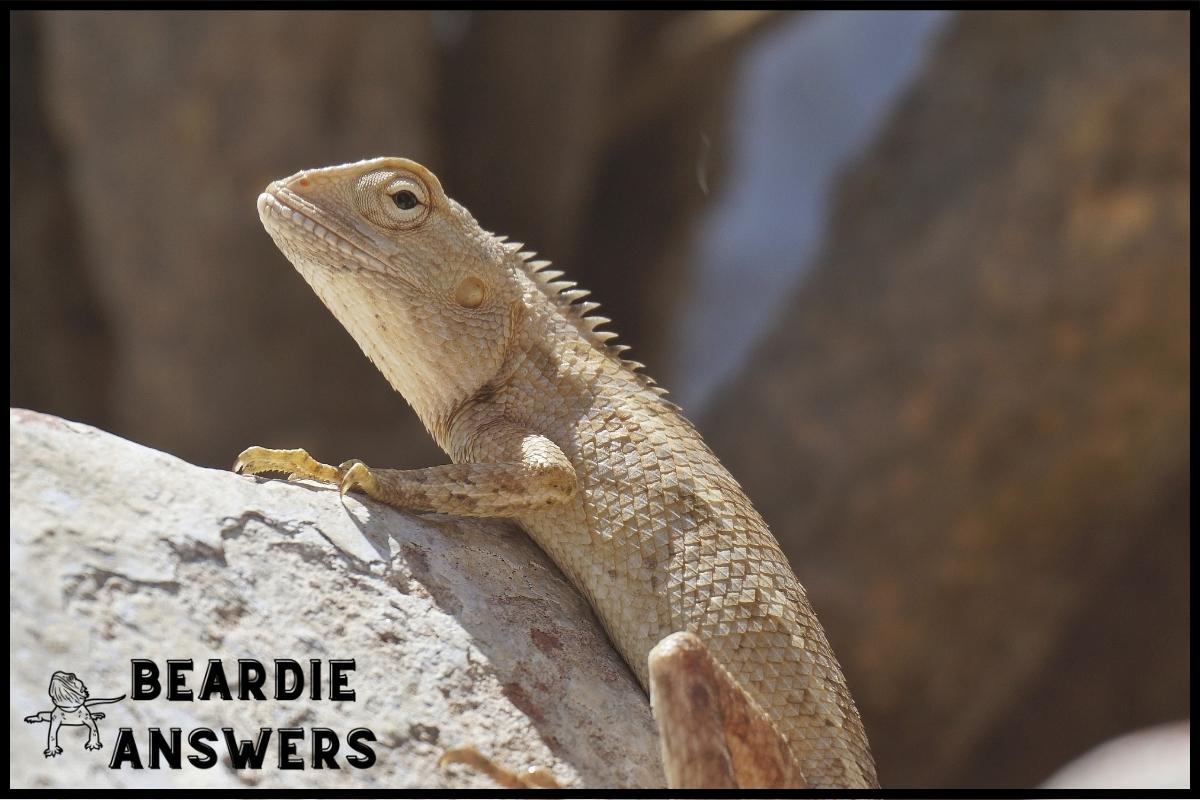Red bearded dragon morphs are a beautiful and popular variation of bearded dragons. These dragons have a reddish hue to their scales, which can range from a deep crimson to a lighter orange-red color. However, it’s important to note that color alone should not be the only factor when choosing a pet. It’s essential to research the care requirements and temperament of any animal before bringing them home.
What You'll Learn
Overview Of Red Bearded Dragon Morphs
Red bearded dragon morphs are a unique variation of the classic bearded dragon. They have become increasingly popular over the years due to their distinctive coloring, which gives them a red hue that is quite eye-catching. The genetics behind this coloration can be varied and manipulated through breeding in order to create new varieties.
Temperature control plays an important role in creating and maintaining these unusual colors as well. Breeding red bearded dragons requires knowledge of both their care needs and their genetic makeup. It also takes skill and patience to ensure successful results.
Knowing how to adjust temperature levels correctly is essential for producing vibrant shades of red, or other desired colors, when breeding this morph type. Understanding the various morph genes involved in creating different colored offspring is equally important too.
With proper guidance from experienced breeders and careful adherence to recommended husbandry practices, it’s possible to produce some truly stunning specimens with richly saturated hues of red – or whatever color you’re aiming for! Ultimately though, success depends on having a good understanding of what it takes to successfully raise healthy dragons with vibrant colors – something that will take time and practice to achieve.
Breeding Red Bearded Dragons
Red bearded dragons are a popularly sought after morph due to their unique red hue, making them stand out in any enclosure. Many breeders have taken up the challenge of mastering this color variation with its complex genetics. To produce offspring that express the desired red hue, it’s important for breeders to understand how to work with these red genetics and apply appropriate breeding techniques.
Below is a list of three key points about breeding Red Bearded Dragons:
- Understand the complexities of red genetics when pairing different morphs together
- Follow standard breeding protocols such as having proper temperatures and humidity levels during incubation
- Monitor the progress of eggs closely throughout development stages
Once you’ve successfully produced hatchlings expressing the desired gene expression, then comes the next step – ensuring they have access to adequate nutrition for healthy growth. The diet requirements for Red Bearded Dragons will be discussed in detail in the following section.
Diet Requirements For Red Bearded Dragons
Red bearded dragons, like all other reptiles, require a balanced diet to remain healthy. As carnivores, they should be fed insects such as crickets, mealworms and wax worms. Additionally, it is important to supplement their diets with calcium powder to ensure proper gut health and calcium intake.
A wide variety of fresh vegetables such as green beans, zucchini and bell peppers are also beneficial for red bearded dragon morphs. In addition to providing hydration and a source of vitamins, these veggies can make up around 25% of their total diet.
When feeding your red bearded dragon it’s important not to overfeed them or give too many treats – this can lead to obesity which in turn can cause further health issues down the line. It is recommended that you feed your pet two small meals per day instead of one large one; this will help keep its appetite under control.
Finally, an essential part of caring for a red bearded dragon is ensuring its environment has appropriate humidity levels and temperature ranges throughout the day and night. This helps maintain optimal physical condition and provides an ideal habitat that encourages natural behaviors. Moving onto housing requirements for red bearded dragons will provide more insight into how best to care for these unique lizards.
Housing Requirements For Red Bearded Dragons
Let’s talk about the essential housing requirements for red bearded dragons.
We’ll go over:
- Temperature
- Humidity
- Lighting
- Substrate
- Decorations
- Size
- Privacy
- Ventilation
- Furnishings
- Heating
- Feeding
- Water bowls
- UVB
- Calcium
- Shedding.
Temperature
When it comes to housing requirements for red bearded dragons, temperature is a key factor. It’s important that their environment has appropriate temperature fluctuations and heat regulation in order to keep them healthy and happy.
To maintain the optimal temperatures in your dragon’s enclosure, you’ll need to have both a basking spot as well as an area of cooler temperatures. The ideal range for these areas should be between 80-95°F for the hot side, and 75-80°F on the cool side.
Additionally, making sure your dragon has access to UVB lighting will help facilitate proper heat regulation throughout the day.
All this adds up to create an ideal home for your red bearded dragon!
Humidity
Now that we have a good handle on temperature control and lighting needs for the red bearded dragon, let’s talk about humidity.
Humidity is another important factor when it comes to housing requirements. Bearded dragons need an environment with around 40-50% relative humidity in order to stay healthy and comfortable.
If you don’t maintain this level of humidity, your dragon could be at risk for dehydration or respiratory issues. You can monitor the ambient air moisture levels using a hygrometer and misting the enclosure several times per day as needed.
Keeping up with these measures will help ensure your pet stays happy and healthy in their home!
Common Health Issues In Red Bearded Dragons
Red bearded dragons have become increasingly popular in recent years, and while they may look beautiful, it’s important to remember that proper care is essential for their health.
Common physical ailments can arise from incorrect temperature control or poor nutrition. It’s important for owners of red bearded dragons to understand the needs of these reptiles:
- Temperature should be between 75-80 degrees Fahrenheit during the day with a basking area at 95 degrees.
- Humidity levels should remain moderate (roughly 40% – 50%).
- A calcium supplement added to food every other feeding helps promote healthy growth and prevent metabolic bone disease.
It’s also vital that they eat an appropriate diet full of greens and vegetables, as well as insects such as crickets. Without the right balance of nutrients, red bearded dragon morphs are more prone to infections or parasites which can quickly lead to serious conditions if not treated properly.
With the right level of care though, red bearded dragon morphs can live long and healthy lives. To ensure this happens, it’s essential for any potential owner to educate themselves about how best to provide ideal living conditions for them in captivity.
Caring For Red Bearded Dragons In Captivity
Now that we have discussed the common health issues in red bearded dragons, let’s move on to caring for them.
When keeping a red bearded dragon in captivity, it is important to replicate its natural environment as closely as possible. This means providing proper heat requirements and light cycles similar to what they would experience in their native habitat.
The optimal temperature range for a red bearded dragon should be between 90-100°F during the day and no lower than 75°F at night. The best way to achieve this is by using an appropriate basking lamp or ceramic heat emitter over one side of the enclosure so your pet can regulate its own body temperature throughout the day.
Additionally, you will need to provide UVB lighting with full spectrum bulbs for about twelve hours per day to help keep your beardie healthy and active.
It’s also essential to ensure adequate humidity levels within the terrarium which should be around 40-50%. You can easily maintain these levels by misting lightly once or twice daily with warm water, especially if you are housing multiple dragons together.
Providing suitable substrate such as sand or reptile carpet for climbing and digging is a great way to enhance your pet’s quality of life too. With all these factors taken into account, your red bearded dragon should thrive in captivity!
Conclusion
In conclusion, the red bearded dragon morphs are an exciting and unique addition to any reptile enthusiast’s collection.
Owning one of these captivating creatures requires commitment and dedication in order to provide them with a healthy environment they can thrive in.
By researching their diet requirements, housing needs, breeding habits, and common health issues that may arise, you’ll be sure to give your pet every chance at success.
With proper care and attention, your red bearded dragon will make for a fascinating companion who will bring joy into your life.

Hi! My name is Bryan, I am the “one behind the words” here are BeardieAnswers.com. I believe that providing quality care and nutrition is the best way to ensure the health of your pet. Every beardie is special and deserves the best care and attention. If you have questions about your bearded dragon, please don’t hesitate to ask! View My Full Author Page




